Story by Brandes Elitch, photos by David Fetherston
On May 6, about 3000 motorcycle enthusiasts gathered at the Quail Lodge & Golf Club in Carmel Valley, California for the 9th annual Quail Motorcycle Gathering. Carmel Valley is a surprisingly rustic and rural stretch of road that runs from Carmel Village on the bay to Salinas inland. The program states that “what began as a small gathering of enthusiasts has grown into one of the premier celebrations of motorcycling in the country,” and this is an understatement. There may be other “events” such as Daytona Bike Week, but there is no other motorcycle show like this or anything close, anywhere in the country. On the green in back of the Lodge were about 350 motorcycles, scooters, and bicycles, with a special tribute to 50th anniversary of the Norton Commando.
The highlight of the day was an interview given by organizer Gordon McCall with honorary guest Kenny Roberts, three-time 500 cc Grand Prix World Champion and two-time AMA Grand national Championship #1 plate holder (1973-4). In 1978, Roberts became the first American to win the World Championship Grand Prix, and he defended his title in 1979 and 1980. Roberts changed racing: as Kevin Cameron has written, “He braked late and hard for corners, got most of his turning done early, and then used the rest of the corner as a dragstrip to launch himself at a higher-than-usual speed, steering with the throttle on the next straight…an intellectual of racing.” During the interview, Gordon brought on stage two other famous riders: Mert Lawwill and Wayne Rainey. Mert is a professional motorcycle racer, race team owner, and mountain bike designer. He won the 1969 AMA Grand National Championship, and was a top competitor on the AMA circuit during the 1960’s and 1970’s. He had an incredible 161 career AMA Grand national finishes during his 15 year racing career. Wayne Rainey won the 500 cc World Championship three times and the Daytona 200 once, during the late 1980’s and early 1990’s. All three have been inducted into the AMA Motorcycle Hall of Fame. It was a magical half-hour.
Unlike the activities during “Car Week” in August, the motorcycle event is a low key affair. There are no crowds or crowding, and getting in and out, and parking (exhausting in August) is a completely normal experience. But there is more to the uniqueness of this show, and it got me to thinking about why this is the case. I think it comes down to the fact that first and foremost, the people who are exhibiting their bikes are riders, not collectors. They are not “displaying” their bike; they are riding it, and this is a major difference from what happens in August. They collect motorcycles for the thrill of the ride. As Phil Schilling has written in his book “the Motorcycle World,” “Motorcycling generates a sense of mastery in the rider…the very act of balancing and guiding such a vehicle creates a union…the motorcycle telegraphs the rider in never ending streams…surrounded by rushing wind and the engine’s mechanical thrashing, the rider speaks a body language with the machine and the road below. Nothing need be lost or filtered out. This body talk, a kind of nonverbal language which man and machine carry on, proceeds directly. Out of this unconscious telegraphy between bike and rider a sense of mastery begins to grow.”
Unlike the daily stream of concours which last a whole week in August, here there is no pretension, showing-off, attitude, ostentation, or flashing of wealth. With some notable exceptions, most of the bikes on display would be affordable to the average middle-class person, in today’s world where the average new car is $34,000 and many collector cars are more expensive than that. Working on a motorcycle is possible for these owners, and many do just that; doing your own work on a collector car is a more daunting experience.
As I have written before in an interview with Gordon McCall last year, this show is the result of his personal vision, and may I add, his personal Rolodex. Gordon seems to know everyone and anyone in both car and motorcycle collecting. This is not to underestimate the help from the organizing committee or the people responsible for the facility, Peninsula Hotels and Signature Events. Gordon makes these things happen, and it must take a full year of work to put on these shows. While the Laguna Seca racing activities and of course the Pebble Beach concours still occupy pride of place, Gordon’s two shows at Quail Lodge are increasingly viewed as the ne plus ultra of the week.
Given that the Norton Commando is fifty years old, it seemed a logical choice as showpiece of this year’s event. Bob Yacenda wrote in the event program, about Norton CEO Dennis Poore, “He created an environment that fostered visionary designers the ability to realize their concepts into a product, with the notion of building a new style frame and tilting the engine cylinders forward, mounting the engine in rubber, and giving it some modern styling.” At one point, Norton had over 800 dealers in the U.S.! The product was continually updated, with different tanks (hi-rise, roadster, interstate, long range, and Interpol), pipes (flat, upswept tip, crossover, and tucked), color (everything you can think of), and handlebars. The Commando was such an iconic design that even today people are talking about making a “modern” version. Few bikes have inspired such loyalty and devotion.
In the second installment to this piece, we will explore five very special bikes. Here it is appropriate to give credit to a bike that took two honors: Best in Show and also winner of the Competition On Road class: the Mondial entered by John Goldman. Actually, this bike stopped me in my tracks when I first saw it, it was so spectacular, and it was surrounded by some pretty special bikes as well. Mondial was a motorcycle manufacturer from Bologna, Italy, producing advanced GP road racing bikes, and winning five World Championships. But after the 1957 season, Mondial, along with the major Italian manufacturers (Moto Guzzi, Gilera, and and MV Agusta) withdrew from racing because of the expense, and the last all Mondial bike was produced in 1960. Interestingly, in 1957 Soichiro Honda contacted Mondial owner Count Boselli to buy a Mondial racing bike, with which Mondial had just won the 125 cc and 250 cc world titles. Honda used this bike as the gold standard for his vision of building a motorcycle and it is the first bike displayed the Honda factory museum.
Talking with Gordon, he explained that his goal is to expand the show even further, perhaps adding more events besides the Friday and Saturday ride. He wants to attract more visitors, particularly young people who have never experienced motorcycling. “We have to find a way to inspire the next generation – we can’t wait for them to find us. We have to reach out to them,” he said. He is in discussions with Cycle World magazine on how to do this. He sees new trends, such as handbuilt bikes. The custom sector is becoming mainstream. Gordon calls this an “all-inclusive” show, meaning that Quail Lodge is a resort, everyone there is treated as a V.I.P, and excellent food is included.
He adds, “Motorcyclists are not used to being treated as V.I.P.’s! He thinks that May is a good time to do this, as the Monterey Peninsula is not yet filled up with activities then. And while it was a perfect day, it was pretty darn cold, and we had to leave early as photographer Dave Fetherston started getting the shakes from the wind and the temperature! Fortunately, motorcyclists are a hardy lot – they have to be.
We’ll review five other outstanding bikes in the next installment, so stay tuned.
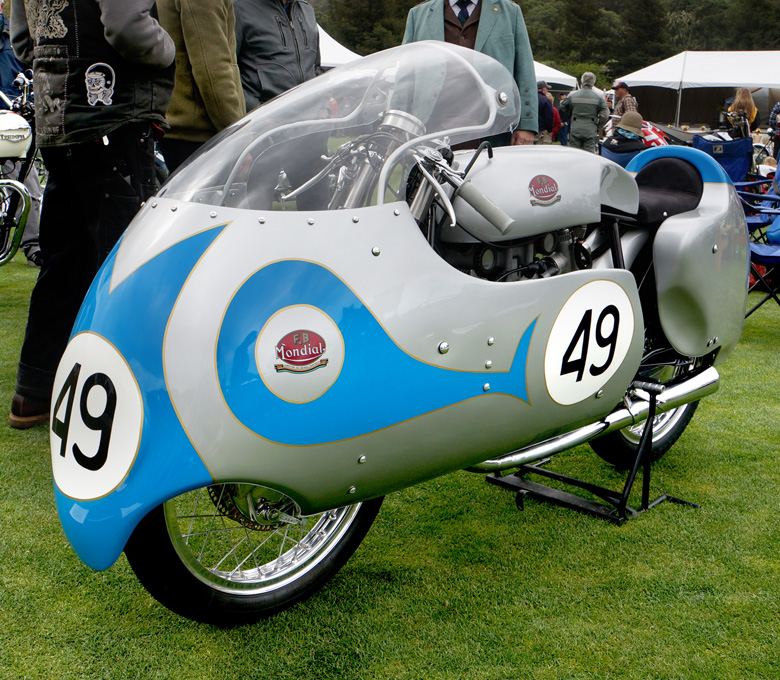
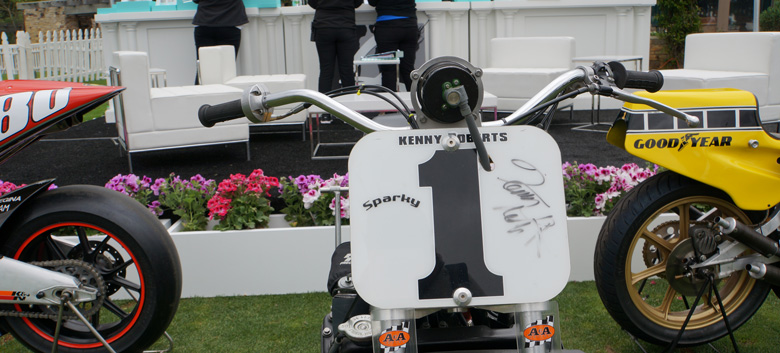
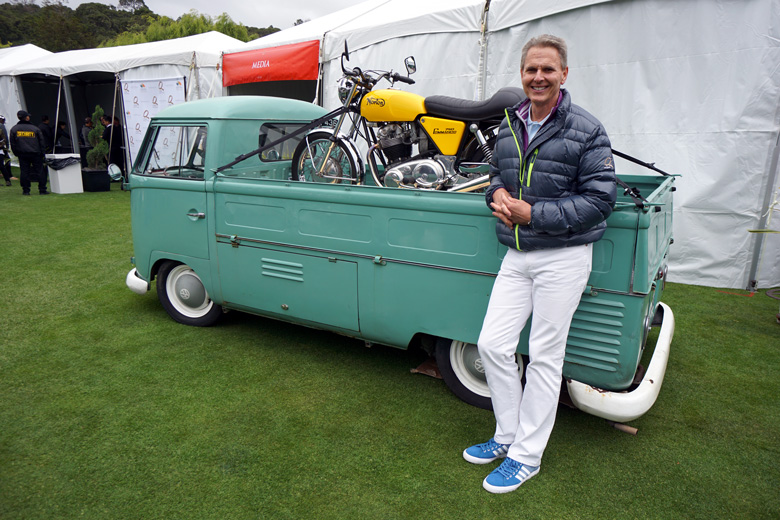
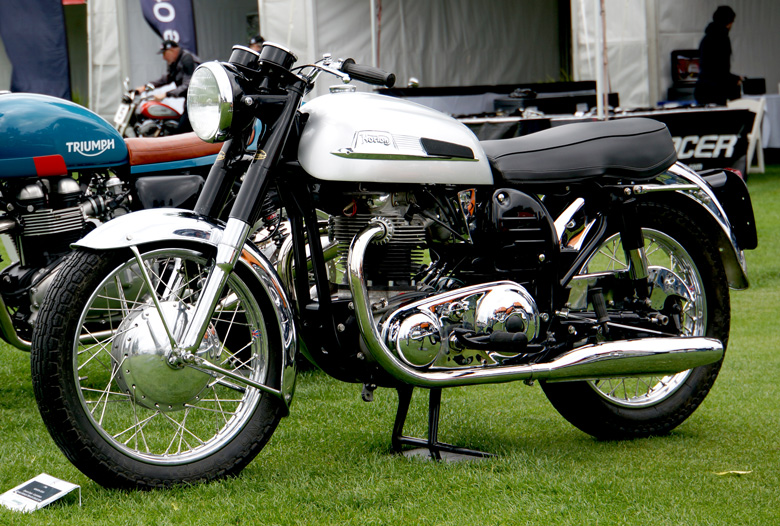
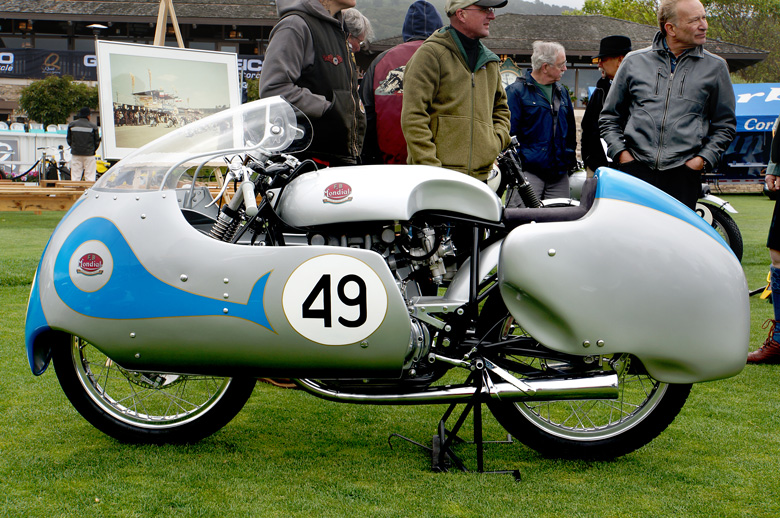

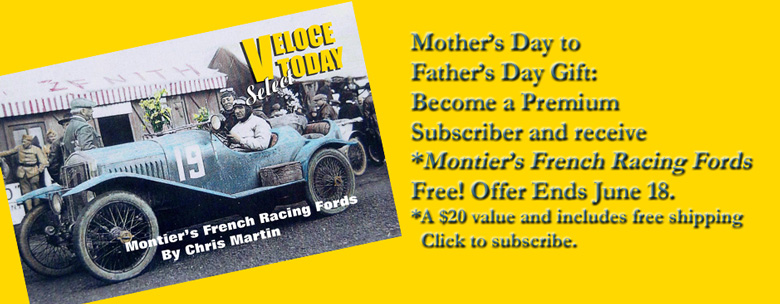
Enjoyed this feature very much since I had seen the Italian teams
racing at Dutch Grand Prix at Assen, and brillant ride by late John Surtees
But obviously MV did not retire then since they went onto claim more
world Titles from 1958 to 60 with Grand John,,!
Exciting for me when John switched to Four wheels as Guest Driver
at Lotus,,putting car on front row with Moss and Brabham, then to
Ferrari.
Jim sitz
there was a water-cooled little Mondial at the Italian bike show in ’70. I sent them a deposit. it seemed to be the perfect companion for my Scott flying squirrel. but they said it was only a prototype and wouldn’t be produced; and if I sent them $400 more they’d send me “something.” I eventually got a 50cc cafe racerish candy apple gold and pewter bike with the cutest teeny disc brake. I still have it today, original tires–armoralled monthly–and everything